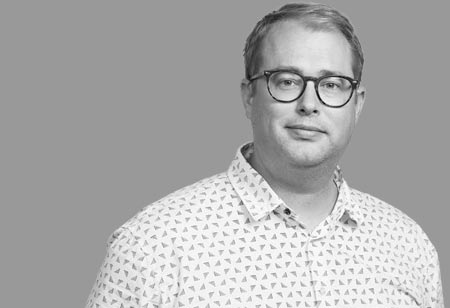Precision farming is no longer limited to tech-savvy farmers and advanced university graduates. SEGES Innovation, an agricultural research and innovation centre, decided five years ago that we wanted to make precision farming mainstream. We started our journey in Denmark but are soon making CropManager available beyond.
The primary focus has been on creating the user-friendly management software CropManager, which links satellite photos, field data, and 50 years of field trials to automatically provide a useful, application map for farmers.
Precision farming is used to cultivate almost 10% of Denmark's total arable land, and the area cultivated with CropManager technology has increased sevenfold in the last two years.
Precision farming technologies benefits farmers by allowing them to redistribute seed and fertilizer, use fewer pesticides, and produce a higher yield. This is beneficial to the environment, the climate, and the farmer's bottom line.
I would like to share our Danish experiences in the hope that they will benefit agriculture worldwide. These three factors have had a significant impact on the growth of precision farming in Denmark:
Simple, easy to use, and intuitive
Our software has a user interface that is so intuitive that the vast majority of Danish farmers will be able to use it, at least if they are used to use a smartphone or tablet. We strive to make the program so simple to use that using it is even preferable than not to use it. And due to the fact that CropManager works on several fields; you can generate 30 application maps, ready for distribution, in under 30 seconds.
Of course, there are a lot of programs available in the market which in theory can perform the same operation, but why not spend the time in the field, where value is created, rather than spending time creating prescription maps?
A growing number of Danish farmers are working with precision farming. One of the primary reasons is the development of simple, user-friendly software
Simultaneously, data is transferred automatically between CropManager and the tractor terminal. Simply press a button to transfer the application map from CropManager to the tractor terminal, and you're ready to fertilize, sow, or spray.
And we have truly succeeded in making it simple, easy to use, and intuitive. One of our users, for example, claims that in order to have the most up-to-date map, he always adapts the digital field maps in the program just before going out for a drive with, say, the fertilizer spreader. And, because CropManager is so simple to use, he can modify the current field map while the coffee machine is brewing.
Software aids in professional evaluation
It is one thing to see satellite images of one's fields; this can be exciting, educational, and provide a wealth of information. But how can these satellite images be transformed into an application map that the tractor can use to control the implements? This is the immensely helpful outcome of CropManager's automated nature, which converts a satellite-derived biomass map into an application map that the farmer can easily be transferred wireless to the tractor. The algorithm, which is based on 50 years of field trials, begins by selecting the satellite image that is most relevant. The algorithm then converts the satellite image into a product quantity.
As a farmer, you then have the option to enter each application map individually and make smaller adjusts, depending on your expert knowledge and experience from the particular field.
Automatic documentation
Precision farming is now, even by the Danish government, a recognized practice for lowering nitrogen emissions in Denmark. Documentation for authorities has become even more crucial in this situation. We have automated this documentation in the data communication between CropManager and the tractor's data terminal so that the log files automatically come back and are matched with the original task. This is a significant benefit for the Danish farmer and aids in the future spread of precision farming.
Moving beyond the early adopters
Although we are well on our way to spreading precision farming in Denmark, there is still much work to be done. We primarily work with software development, but it is also important to get the hardware in the machines to work and, last but not least, to prepare the farmer for change. And this change should not be underestimated, because if you have been cultivating your fields based on one set of principles for several years, it takes time to adjust to new routines. Therefore, if we are to expand beyond the early adopters, a significant investment in implementation on each farm is required if precision farming is to become even more mainstream.
However, once the farmer sees that the system works, the message spreads and we see more and more farmers who dare to test the technology's capabilities, resulting in an even greater increase in users. I believe that the long-term environmental benefits and constant advancement of technology will result in a significant increase in the number of farmers using precision farming in the near future.


